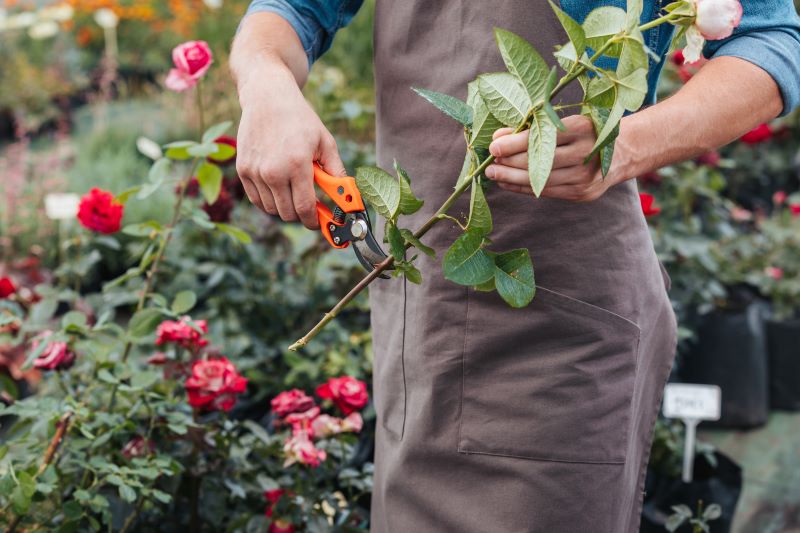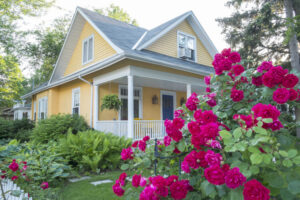
Roses are arguably some of the best known and fragrant of flowers. However, their reputation for being difficult to manage has long made them extremely intimidating to most gardeners.
Fortunately, becoming an accomplished master at maintaining beautifully verdant rose bushes just takes a bit of willingness to make a regular effort at pruning, disease prevention, and insect control.
With a bit of experience, you’ll soon realize that any clipping mistakes will just grow out, and simple removal of tiny pests can go a long way towards producing a lovely result that will be the envy of your neighbors.
Planting and Growing Basics
The appropriate time to plant roses depends largely upon the gardening zone where you live. All danger of frost should have passed, and the ground must be workable.
Rose bushes generally require six hours of morning sun, though they will be fine getting light at any time of day as long as it meets this minimum amount.
You should take into consideration however, that afternoon sun is often accompanied by excessive heat. Your rose bushes might benefit from some shade during the hot afternoon hours.
Late watering is generally not advised, as it can lead to mildew development. The majority of expert gardeners will recommend watering during the early morning hours so that the sun can adequately dry the foliage and surrounding soil of your rose bush.
Most roses do well with thorough irrigation twice a week.
Along with your initial watering, you should perform touch tests at various intervals and depths to ascertain how well the soil drains. Something as simple as the addition of peat moss to your soil can lead to inadequate drainage.
Be certain to plant in well-drained soil. Remember that wetter bushes are more likely to become diseased, especially when their foliage is moistened.
The location of your rose bushes should factor in all of these details.

Pruning
Typically, pruning should begin about 6 to 8 weeks after your rose bush has really started to come alive. This promotes new growth, improves circulation of drying air, and removes dead material from the woody parts of your bushes.
Pruning is generally successful when begun from the base of your bushes, just as the bushes leaf buds begin to swell.
Smooth cuts should be made at a 45° angle at a minimum of 1/4″ away from outward-facing buds, focusing on opening the center trunks to light and airflow, and removing dry, shriveled, or blackened wood.
Some gardeners choose to protect the open cuts from Sawflies and Carpenter Bee larvae, known as cane borers, by sealing recently pruned areas with regular white glue.
Many people are afraid of pruning. However, not pruning may do more damage than an occasional snip in the wrong area. Mistakes will eventually grow out, and pruning can help produce larger numbers of blooms and beautiful foliage.
Pest Combat
A 20x magnifier is a handy tool for identifying small pests on the undersides of leaves. If only a few are present simply picking them off of the bush is sufficient.
Larger pest infestations can be dealt with using either chemical controls or natural methods, according to your particular preferences.
Disease Control
Roses are susceptible to a number of various diseases, such as black spot, powdery mildew, rust, and rosette, among others. One of the first steps in preventing diseases is to purchase disease-resistant plants.
There are a number of chemical and natural methods of dealing with some of these diseases. However, the best prevention is proper care and maintenance of your rose bushes.
Summary
Rose bushes can dramatically transform your yard so don’t be afraid to get started growing roses. Start with one small rose bush and gain some confidence. Before you know it, you’ll be covered in roses!



